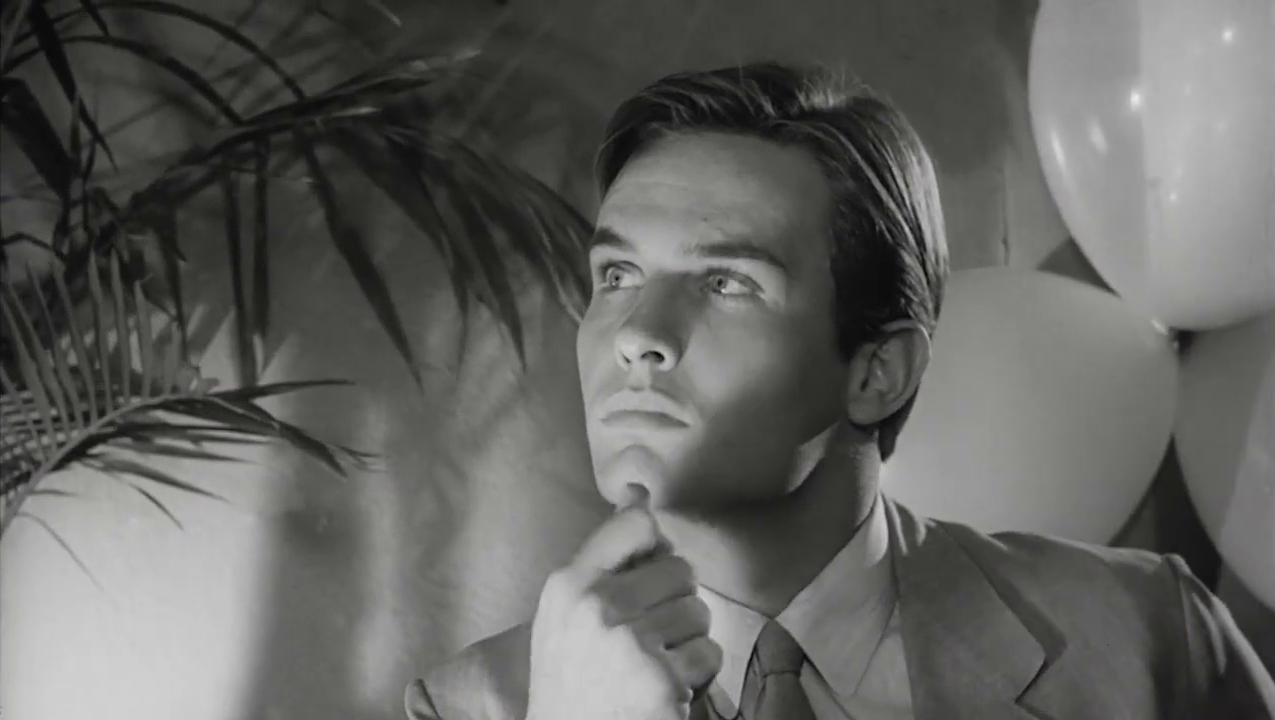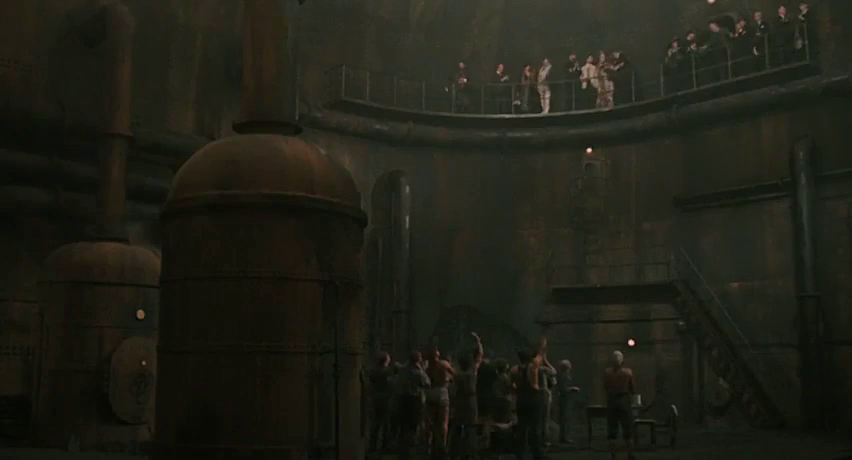“No, Wagner! Stay in Hell where you belong!”Lisztomania (Ken Russell, 1975)
Jun
16
National Richard Day

The cover of November 1975's films and filming (NSFW). Richard Wagner (Paul Nicholas) appears as a vampire in a German sailor uniform to Franz Liszt (Roger Daltrey). DP: Peter Suschitzky.
– Franz Liszt
music
“It's not my fault that opportunity came my way.” Rat Fink [My Soul Runs Naked / Wild and Willing] (James Landis, 1965)
May
11
World Ego Awareness Day

Real-world teen pop idol Schuyler Hayden as Lonnie. He's very pretty, and pensive, sitting in front of a potted palm and balloons, this thumb up to his chin. His face and eyes are lit in such a way that he looks strangely sinister. DP: Vilmos Zsigmond.
Pretty boy Lonnie gets what he wants. And he wants to be out of where he came from, and he wants to be wanted and rich. And he's got the looks and the voice and the ego. So he gets it, the getting out and the love and the money. And then some. And then some. And then.
– Lonnie
Rat Fink is not your pop-idol-turned-movie-star vehicle. Something's off, no good vibrations here. It's dark – not in the least thanks to cinematographer Vilmos “The Deer Hunter” Zsigmond's doings – and gritty – real-world pop singer Schuyler Hayden doesn't hold back in his portrayal of egomaniacal pretty boy Lonnie.
If it hadn't been lost for half a century you may be fooled to believe that it spawned a certain, fictional 80s investment banker.
“HANDS UP
PUT YOUR HANDS UP
GIMME MORE
GIMME GIMME MORE BETTER GIMME MORE”You the Better (Ericka Beckman, 1983)
May
8
VE-Day

One of the players, an handsome young white man, celebrates a score. He wears blue pants with a yellow string, a blue shirt with a blue T-shirt underneath. On his head a red and white hat. The bill hides part of his face. He's got his right arm raised in victory. Behind him other players in identical kits. On the back of shirts a a symbol that looks like a surprised smiley, or a bowling ball.
They say, the house always wins. In You the Better, the House is an unseen character. The other character – a constantly changing team of athletes wearing blue uniforms and caps and coached by artist Ashley Bickerton – play a baffling hybrid of craps, dodgeball, and roulette while arcade game noises and Brooke Halpin's catchy chants accompany the players. While You the Better suggests repetitiveness, a theme of winning, losing, and competitiveness reveals itself.
– recurring chant
You the Better is part of Beckman's The Super-8 Trilogy, a multimedia art project that explores play in Western society.
“This is the funny thing abut sea voyages. After a few days, you feel as if you'd been sailing forever. You feel you've always known your fellow voyagers.”E la nave va [And the Ship Sails On] (Federico Fellini, 1983)
May
5
National Concert Day

The opera singers and their entourage performing on a platform high above the boilers and elated ships' crew. DP: Giuseppe Rotunno.
The opera world is in mourning. Edmea Tetua, the greatest singer of all time, has passed away. On a grande ocean liner, her friends, colleagues, admirers have come together to scatter Edmea's ashes near Erimo, the island where she was born.
During a tour of the ship, the passengers visit the boiler room where – urged on by the engine room crew – an impromptu operatic competition unfolds, all to the pulsating rhythm of the steamliner's bloated belly.
Mutya ng Pasig [Muse of Pasig] (Richard Abelardo, 1950)
May
2
National Foster Care Day

A young woman, drowned, held up by several helpless looking people. DP: Ray Lacap.
In this #supernatural Filipino melodrama, it being a Filipino melodrama, the town's muse tragically drowns, taking her newborn child with her. The orphaned baby floats down the river then is picked up by an older, childless couple who gladly raise her as their own. The child has a strange attachment to the #Pasig river where at night, a mysterious spellbinding voice sings the #kundiman [traditional love song] Mutya ng Pasig.
While Mutya ng Pasig is a lovely, somewhat predictable mystery by Richard Abelardo, it's well worth your time on a slowly meandering, hot summer night.
“Once upon a time, or maybe twice, there was an unearthly paradise called Pepperland. 80,000 leagues beneath the sea it lay, or lie. I'm not too sure.”Yellow Submarine (George Dunning, 1968)
Apr
28
Clean Comedy Day

A Blue Meanie pirouetting on a blossoming flower that pushes itself up into the sky. The sky is white while the flower and clouds are multicoloured.
A Gen X-er, I grew up in a completely different world where so many films and TV that kids watched – if watched with today's eyes — were not particularly kid-oriented at all. I fondly remember Monty Python and the Holy Grail (1975) and reenacting the Black Knight scene in the school grounds. Yul Brynner as a faceless, rampaging cyber cowboy in Westworld (1973)? Sure, bring it on! Not that the official kid's movies were “clean”. Did you spot the chicken decapitation in Willy Wonka & the Chocolate Factory (1971)? Well, you will now.
– narrator
Alright, I'll keep it clean and suggest a dose of Yellow Submarine. A fantastic adventure starring The #Beatles (well, their likeness mostly) who are summoned to save utopian, music-loving #Pepperland from the music-hating Blue Meanies. Trippy fun, and lots to discover the older you get.
Yanco (Servando González + Mohy Quandour, 1961)
Apr
21
Fiddlers Frolic

Juanito (Ricardo Ancona), seen in silhouette, playing his violin in the chinampas. DP: Álex Phillips Jr..
In Mayan worldview, mortals move along the horizontal, gods along the vertical plane. A boy travels both worlds, united by music and wonder.
Juanito, a #Mixquic boy with hypersensitive hearing, finds solace from the hustle of #MexicoCity in the silence of the chinampas – the pre-Hispanic man-made agricultural plots in lake #Xochimilco. There he plays his cardboard fiddle for the nature around him, until the sound from a real violin reaches him. The violinist, an old hermit who lives on one of the chinampas, takes the boy in and teaches him how to master Yanco, his hand-built instrument. When the man dies, the boy goes out at night to be able to play Yanco. In a changing world where the living and the dead used to naturally cross paths, the strings stir different to some.
The #Nahuatl film Yanco is a small cinematic miracle that begs for a beautiful restoration akin to how Govindan Aravindan's കുമ്മാട്ടി [Kummatty] (1979) opened up the world to indigenous filmmaking.
“In terms of sheer entertainment value, I think that it demonstrated that one eccentric genius alone in his garage can rival the best of the Hollywood studios”” Multiple SIDosis (Sid Laverents, 1970)
Mar
27
National Acoustic Soul Day

Clockwise: Sid playing a ukulele, Sid whistling, Sid playing improvised chimes (metal pipes and one cymbal hanging from an overhead microphone stand), Sid blowing a tune on champagne bottles, one metronome. DP: Sid Laverents.
There's a handful of notable amateur films in the National Film Registry. One of them is the Zapruder film, another Sid Laverents' Multiple SIDosis.
– Ross Lipman, UCLA Film & Television Archive restorationist
Sid Laverents was an airplane engineer and former one-man band vaudevillian who in his fifties joined the #SanDiego Amateur Moviemakers Club. One of his best-known outputs, Multiple SIDosis, took him and his 16 mm #Bolex four years and 1,900 feet of celluloid to make. In it, Sid – and a musical troupe made up of many overdubbed versions of himself – performs the popular and insanely catchy tune Nola.
Catch it here.
“I pledge allegiance to the flag–the white flag. I pledge allegiance to the flag of America. When they say “black” or “negro,” it means you’re not an American. I pledge allegiance to your flag. Not that I have to, but just for the hell of it I pledge allegiance. I pledge allegiance to the flag of the United States of America. The white flag, with no stripes, no stars. It is a prestige badge worn by a profitable minority.”Mingus: Charlie Mingus [Mingus / Mingus In Greenwich Village] (Thomas Reichman, 1968)
Jan
20
National Charlie Day

Charles Mingus and Carolyn sharing an intimate father/daughter moment in their studio. DPs: Lee Osborne & Michael Wadleigh.
Thomas Reichman follows bandleader and musician Charles Mingus in those tense hours on November 22, 1966, right before he's forced to evict his #GreenwichVillage studio.
– Charles Mingus
Between the banter (“This is the same gun they shot Kennedy with”) and magical moments between the giant and his little daughter, we see and hear Mingus perform at Lennie's-On-The-Turnpike in Peabody, Massachusetts.
“This song is called 'Alice's Restaurant', and it's about Alice. And the restaurant. But Alice's Restaurant is not the name of the restaurant, that's just the name of the song. And that's why I called the song 'Alice's Restaurant'.Alice's Restaurant (Arthur Penn, 1969)
Jan
13
Stephen Foster Memorial Day

Arlo (Arlo Guthrie, son of legendary folk musician Woody) jams with his film-dad Pete Seeger. DP: Michael Nebbia.
A songwriter as the lead.
– Arlo Guthrie, intro to “Alice’s Restaurant Massacree” (1967)